The “Vices” Issue
October 26, 2015
Our generation does drugs. We make money in unorthodox ways. We are in unconventional relationships. We know this, but we hardly talk about our varied behaviors without sneering at those that are different from ours, denigrating each other based on a loose set of morals. For this reason, I wanted to provide an open forum to talk about topics ranging from unfulfilled open relationships to lucrative “sugar” relationships. This is WSN’s “Vices” issue, a conglomeration of student narratives and interviews that attempt to hurdle the stigma that comes with the word “vices.” These students are not the outliers of society, just as these “vices” are not symptomatic of deep personal or cultural problems. In fact, they’re not “vices” at all. This is our generation, speaking for ourselves.
Some of the topics are of a sensitive nature. For this reason, either the writers or those quoted in stories were protected by anonymity or given pseudonyms.
Using Vices to Make Money: Taylor Deals Drugs from her Dorm Room
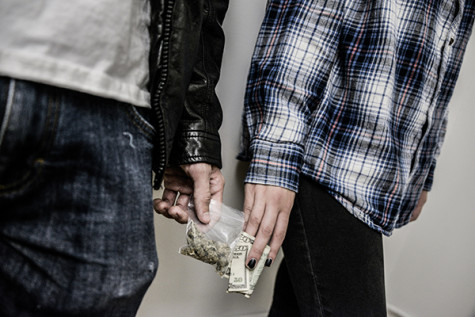 Imagine entering your psychology lecture and sitting down in your seat — and a drug kingpin sits down next to you.
Imagine entering your psychology lecture and sitting down in your seat — and a drug kingpin sits down next to you.
That’s probably unlikely, but a school as big as NYU certainly has its fair share of dealers ready to plug your fix. This is exactly what Taylor* does, an NYU student who sells drugs to everyone from frat brothers to that kid who hasn’t left the library in three days.
What’s on her menu? Anything you want, really. Taylor buys her drugs from online anonymous marketplaces, like the now-defunct Silk Road, located on the Dark Web and accessible only through services like the Tor Project. This puts her ahead of more traditional dealers, where there is often a chain of command through which the drugs travel — and it’s not just because it means she has access to everything.
“When you order online, the economies of scale are ridiculous,” she said. “I order a sheet of 100 tabs of acid for like $250. So it’s like less than $3 dollars [per tab] and street price is like $15 if you’re really generous.”
The Dark Web is a term that refers to much of the illicit content of the Deep Web, which are all the websites not indexed by your standard search engine. Of this illicit content, 15 percent is focused on drugs. Taylor uses Tor to access the Deep Web because it guards against her IP being discovered by those snooping on her activity, and she protects her lines of communication with market dealers using PGP encryption. In other words, she does everything she can to cover up her virtual tracks.
When placing her order online, Taylor has the drugs delivered via mail in airtight packages, and after picking them up, she then divvies up the contents into a briefcase tucked away in her closet.
Taylor sells to 15 to 20 people a week, which adds up to roughly eight hours of work, bringing in around $600 in that time — not a bad part-time gig for a student putting herself through college. She’s using the money to pay for her living arrangements, and the money will fund her studying abroad next year as well.
Somewhat surprisingly to Taylor, her biggest customers are members of Greek Life at NYU, despite how much it can seem to fly under the radar.
“[Frats] are very interested in weed and coke, and same with sororities, and I was really surprised by that because NYU does not seem Greek Life-oriented at all, let alone for them to be moving that quantity,” Taylor said. “They’re usually my biggest deals because one person will just meet me for the entire frat.”
However, Taylor makes it clear that it’s not all fun and games, and while she hasn’t had any close calls with authority figures thus far, she says she’s always on the lookout.
“It is stressful because at any moment I could get the rug ripped out from under me,” Taylor said. “It’s risky business but it does pay off. And it’s not like I’m running a cartel and planning on doing this for the next 10 years.”
There are definitely peripheral perks that come with being a drug dealer which many people may not even consider — the social life.
“It sounds really shallow but I know of every party on campus all the time, whether I’m going to drop something off or someone mentions it,” Taylor says. “I’m always welcome everywhere because I always have the goodies, so it’s a nice open invite.”
Taylor tries not to let being a drug dealer consume her life, and said she is humbled by the fact that if her clients weren’t interested in drugs, she would have to struggle to find something else illicit to do because she doesn’t have the time for a full-time job.
“I’m dependent on people’s bad habits,” Taylor said. “That’s humbling enough to never want to rip people off.”
*The name of the subject of this article has been changed to protect his or her anonymity.
A version of this article appeared in the October 26 print edition. Email Alex Bazeley at [email protected].
Using Vices to Make Money: Lexi Goes on Dates
Lexi,* dolled up in dresses and makeup, spent the summer of 2015 as a sugar baby. Her mini career started from a conversation with a friend while abroad. After scrolling through advertisements on Craigslist and being particularly intrigued by an ad to have sex with a man for $10,000, Lexi, a Gallatin senior, dove into the world of transactional love and became a sugar baby.
Sugar babies — young men and women who receive money and gifts from older adults in exchange for companionship — are often college students looking to support themselves. Although Lexi did not go through with the $10,000 Craigslist advertisement, she started going on walks and out to coffee with an array of men. Usually, the dates were non-sexual.
“I would get anywhere from $50 to $100 for an hour of coffee with the illusion that it was going to be sex,” she said.
There was one guy that Lexi saw recurringly. What started as a coffee date at the Astor Place Starbucks with a large man — teeth decorated with veneers and bouquet in hand — turned into an uncomfortable handjob in a hotel room.
“I was so scared walking into the hotel room,” Lexi said.
The agreement was that Lexi would give the man a massage and that’s it. But once in the hotel room, the man kissed her and then asked her to get in her bra and underwear.
“All I could think was, ‘Where is my phone and where is everything in relation to where I am?’ in case it got dangerous,” she said.
While the situation never escalated and everything was consensual, Lexi ended up giving the man a handjob.
“I looked away and I was giving him a handjob really fast, like really fast,” she said. “He couldn’t even get hard and said, ‘You’re obviously uncomfortable.’”
Afterwards Lexi received $600 from the man but never heard from him again. The rest of her sugar relationships were non-sexual. She sent some raunchy photos to some of the men that she was courting, but she made a point to cover her boobs, face and tattoos.
Lexi was not just jacking off old guys off in hotels and scrolling through Seeking Arrangements for personal entertainment. She was trying to keep up with what she called the NYU lifestyle.
Although her parents were paying for her tuition and her rent, they recently experienced a financial hardship and couldn’t help Lexi with her personal expenses beyond $40 a week. To remedy the situation, she was worked up to five jobs at the same time.
“To keep up with an NYU lifestyle, the lifestyle I want, the guys I want to meet, the friends I want to have, money is just a part of it,” Lexi said.
Being a sugar baby wasn’t glamorous, but she said the lifestyle gave her a different type of energy that she described as an adrenaline rush, which led her to start shoplifting and over-consuming alcohol and drugs. Her personal, non-monetized relationships with men were tainted, and her mental health suffered.
“I’m not a good girl but I’m not a whore, but I was for a second,” she said. “Once you do it, that’s the brand that you get.”
Her sugar career lasted from mid-May to August, and she had seven sugar daddies in total. Lexi said she doesn’t know if she regrets it, but wouldn’t recommend it to anyone.
“It’s a paradox of feeling like it’s justifiable, that it’s not that bad,” she said. “I’m still a good person but there’s the other side that took away any shred of innocence that I ever had.”
*The name of the subject of this article has been changed to protect his or her anonymity.
A version of this article appeared in the October 26 print edition. Email Kavish Harjai at [email protected].
Walking Through Galleries, Dazed and Confused
Nineties cult classic “Dazed and Confused” revolves around experimental teenagers in the 70s, and the plot remains just as relevant in today’s youth culture. The presence of hallucinogens in the lives of millennials cannot be denied. Unsurprisingly, there is a parallel between drugs and art. Just as hallucinogens induce psychoactive effects, art has the power to stimulate thoughts and emotions. As the city is home to some of the most celebrated museums and galleries, taking a trip and indulging in art simultaneously is more than possible. Apply the film’s phrase “see it with a bud” for a fresh perspective of art while under the influence.
MELA Foundation: Dream House
275 Church St. between Franklin and White streets in Tribeca
Through the collaborative “Sound and Light Environment” exhibition, Dream House at the MELA Foundation manipulates patterns and sound frequencies for a full-body experience. Featuring the work of composer La Monte Young and visual artist Marian Zazeela, Dream House impacted a Tisch sophomore who regretted not intensifying the experience with a smoke.
“So I went to this place and made the biggest mistake ever — not smoking beforehand,” the Tisch sophomore said. “Honestly when I was there it felt like I was tripping on something. There’s these intense lights and loud tonal music and weird things hanging around but it’s basically a room.”
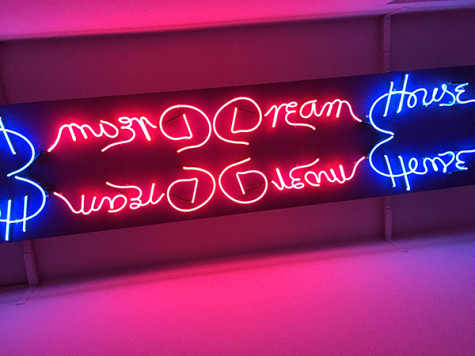
David Zwirner gallery: Isa Genzken exhibition “Mannequins, Mirrors and Self-portraiture”
525 W. 19th St.
“Mannequins, Mirrors and Self-portraiture” featuring the surrealist work of German artist Isa Genzken, shows an array of mannequins dressed in disassociated clothing pieces including fluorescent-colored mesh vests. Contemporary and engaging, the exhibition plays 21st-century pedestrian life by encouraging visitors to flow in and become another part of the work.
“The David Zwirner gallery makes for a surreal trip,” a Steinhardt sophomore said. “The exhibition especially will make you moan oohs and ahhs with its flashy neon colors, transporting you to an alternate space and time.”
New Museum: “Oculus Rift”
235 Bowery
Known as a hub of emerging art and ideas, a visit to the New Museum downtown could surely be an intense experience. The museum proved to deliver unconventionality and strangeness for a Steinhardt junior.
“I did the oculus rift there and it was so surreal and wild,” the Steinhardt junior said. “If I go to a place like the Met while I’m high, I get incredibly bored and paranoid because of the stressful environment. But the New Museum is pretty low key and in my opinion way more interesting.”
Museum of Sex
233 Fifth Ave.
Bound to induce giggles from the immature among us, the Museum of Sex is an erotic experience regardless of being under the influence or not. With photography, sculptures, devices and art revolving around sex, hallucinogens can intensify the titillating experience.
“Under the influence, the MoSex exhibits cease to be simply carnival attractions of pornography, but emit an intense emotional charge through which we can better understand the nature of not only eroticism, but also love,” a Tisch freshman said.
A version of this article appeared in the October 26 print edition. Email Nina Jang at [email protected].
How NYU Deals with Drug Infractions
Students and stimulants often mix on college campuses, but NYU is committed to keeping its scholars focused on higher education instead of getting high.
NYU’s Policy on Substance Abuse and Alcoholic Beverages states that the university aims to create a campus free of alcohol and illegal substances in order to maintain an environment focused on academics.
NYU understands students are responsible for making their own decisions, but the university encourages them to make informed choices through education about the consequences of drug and alcohol use.
NYU policy regarding the possession, use and distribution of substances is based on federal and New York State laws. Students caught disobeying these guidelines are subject to university sanctions such as probation, suspension or expulsion, and are also subject to criminal prosecution including loss of federal student financial aid eligibility, assigned community service, fines and imprisonment.
The penalty imposed on the convicted depends on the individual substance involved, the amount of the substance, the actual or potential risk to the community associated with the incident, the disciplinary record of the student and the cooperation of the student. The actual penalties vary based on a variety of factors, including the type and amount of substance, the risk to the community, and the cooperation and disciplinary record of the individual.
Evan Mayer, a former CAS freshman who dropped out due to problems unrelated to drugs, experienced NYU’s punitive measures firsthand.
He explained having to meet with housing administrators to talk about the incident. However, Mayer said the actual consequences were far less severe than anticipated.
“I literally never got in trouble. The first time [I got in trouble], I never even got an email,” Mayer said.
The second time Mayer got in trouble, housing officials told him he would have to write a paper but never followed through.
CAS junior and Students for Sensible Drug Policy member Leslie O’Neill said NYU places too much of an emphasis on the categorization of illegal drugs without considering that many of these substances vary in danger
and potency.
“Marijuana is much different from Xanax, which is much different from cocaine, which is much different from MDMA,” O’Neill said. “To lump all those together and create a no tolerance for all of them doesn’t seem practical. Zero tolerance policies also lack empirical evidence for their effectiveness.”
A version of this article appeared in the October 26 print edition. Email Lexi Faunce at [email protected].
Reclaiming the Bar Orgy, Proclaiming our Pride
Gay pride in the heteronormative sphere has a tendency to hide the cultural differences that have shaped the homosexual narrative. When a sexual aspect of queer culture is too extreme, individuals are scolded for a non-traditional expression of their identity, one rooted exclusively in heterosexual expectations. This is a sexual account of a student who seeks an all-inclusive definition of gay pride and its intrinsically unique past.
I’ve had my fair share of fun. Bathhouses and barebacking have certainly been buzzwords of my nights. I’ve mastered the art of silent conversations that inevitably lead to someone down on his knees. And while a private, personal connection with someone can certainly add an emotional level to a sexual relationship, a heated and spontaneous encounter with strangers in public can reveal a connection to something bigger than another person.
I couldn’t see a thing in the bar as I descended into a hazy scene. After quickly buying a shot, I began cruising on the dance floor. I had no experience in gay bar culture, but I had survived Welcome Week and all the hormonal peers and queers that came with it. Cruising at the bar, however, was almost easier somehow. There was absolutely no shame here. One didn’t need to bashfully look away, faking some fictionalized, virginal innocence. If you stared long enough, the men would come.
One by one, various takers and I danced, frenched and moved on in a grinding mix of denim pockets and curious hands. Soon, my final suitor led me to a new corner where total darkness enveloped us and disco balls would never shine. The moment I felt not one, but three pairs of hands on me, I knew I’d found something special. Someone’s lips were here, another’s were there and I never wanted it to end. Never had this amount of sexual freedom been given to me, and for good reason. The sexual intensity that the corner room held was unmatched, and there was no way my Gaga-crazed, high school self could have handled it.
Leaving the bar satisfied, I realized I had successfully engaged in my first semi-public orgy. The tangle of bodies was exhilarating, exhausting and downright sexy all at once. It was an experience that overwhelmed me in a moment of young naivete, and I took it as an intimate night I would never forget. Today, I see past the personal reflections into why we gay men still hold onto this slice of cultural history that is so deeply embedded in our culture.
With the presence of social media, some question the effects of such apps as Grindr on cruising culture, the gay bar and the orgy. While not as regularly sought out among the queer community today, the orgy rooms of gay bars are undoubtedly frequented by men young and old. Today’s gay community now has the opportunity to partake in this cultural performance — one that links us to the history of our gay ancestors who searched for nights of spontaneous release without the safety of a screen or a profile picture. So perhaps it’s time to reclaim the bar orgy to proclaim our full sense of pride for our authentically non-heteronormative history.
A version of this article appeared in the October 26 print edition. Email David Bologna at [email protected].
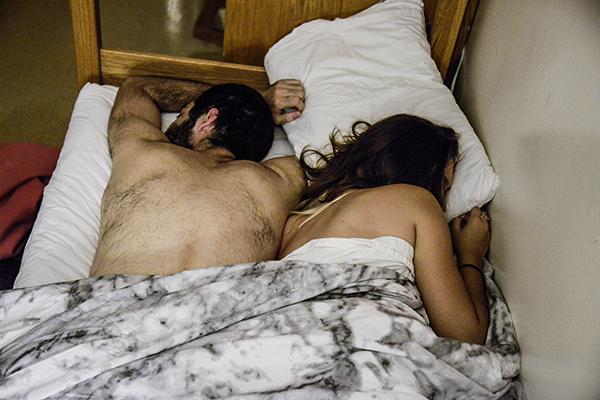
The One and Not-Quite-Done Generation
Our generation has become known for ambiguous relationships that are rarely as simple as “single” or “taken.” The emotionless hookup is often complicated by someone catching feelings. This is the story of two NYU students who attempt to make “friends with benefits” or “the open relationship” a reality.
They met in class, first semester of freshman year. It started out as a hook up during finals or crossing paths after leaving different parties. They were both looking to get tangled up in someone else, whether it was to feel something or to distract each other.
Being friends made them feel comfortable. It was classic — hook up with someone you sort of know, are sort of attracted attracted to, but probably don’t pay much attention to.
The first time they found themselves in bed together was right before winter break. Following that, she thought about it — asked herself the typical questions. What happened this weekend? Did this matter? And of course: Do I text him?
The holidays provided a good excuse to send drunk Snapchats to each other, and social media was a window into each others’ lives.
They returned to school. They made plans to see each other that would fall through, would run into each other on campus, were courteous. When she ran into him in public all she could think of was waking up in his bed two months prior.
They talked anyway. She hungered for attention but not attachment. They texted after long nights out, and she found reasons to bother him with irrelevant sentiments that she hoped sent the message, “Talk to me, I want to see you.”
They fell into bed together again and again. At first, they didn’t know each other’s bodies. They tangled in the sheets. With the passing of time, the awkwardness eased. He dotted her neck with hickeys out of lust, but the next morning all that remained was a reminder to buy good coverup. Unlike in the three-year relationship she had been in, the hickeys didn’t come from a boy that she knew would kiss her next weekend.
Summer came. She learned that it is easier to have feelings for someone from a distance. She would stay up late talking to him, trying to outrun the time difference. He sent a goodnight text with a heart at the end, which freaked her out. However, she knew it was so much easier to feel things for other people when they were only a figure of speech: “my friend with benefits,” “this girl I used to hang out with at school.”
They go back to school. The sex had been flanked by conversations about music, relationships, travel and home. But without sex all that would be left were fragments of a friendship.
They had been sleeping together for five months, and she wanted a more concrete idea of what they were.
“This has been fun, whatever it is that we’re doing,” she wrote to him in a text, hoping to elicit a response to a question she wouldn’t ask.
She understood that he wasn’t looking for another relationship, and he understood if she couldn’t handle just hooking up. They confirmed that they were comfortable with using each other for sex, for company.
One morning the following fall, they discussed other people’s relationships, past and present, which turned into a discussion of their own. She referenced their relationship as “nonexclusive” which was muddled by his reply. “Well I’m not sleeping with anyone else,” he said.
Though she wasn’t either, it complicated the “open” part of the open relationship. Beyond agreeing that they weren’t serious, their relationship was tricky to define when they knew there was an element of consistency. However comforting it was to know that they were not in a “relationship” — at least one that didn’t value monogamy — the question of “What are we?” remained.
And she won’t ask. She’s comfortable not knowing.
A version of this story appeared in the October 26 print edition. Email Grace Halio at [email protected].
College drinking about safety, not prohibition
Countless articles have been written about the prevalence of binge drinking on campuses. NYU, however, represents a special case given our lack of a centralized campus and a smaller Greek footprint than most small-town colleges, and that we in a large metropolis. That said, underage drinking does happen despite NYU’s zero-tolerance approach to alcohol. It’s important to remember amid the hysteria surrounding excessive drinking, college is not real life. College is a time when young adults learn to be fully adult, and a big part of that learning experience is discovering how to drink responsibly. Drinking on campus and in college dorms isn’t going to end any time soon, and rather than seeking to eradicate it, NYU is bringing these conversations to the fore of students’ minds with Alcohol Edu and several programs during Welcome Week. While drinking is a problem and work still needs to be done at all colleges, NYU is doing an admirable job of trying to inform students about the realities of drinking.
Binge drinking in college is mostly associated with dingy basements and frat houses, neither of which are particularly common here at NYU. Instead, a significant part of the drinking culture here revolves around the vibrant nightlife of downtown Manhattan. The university is very much a part of the city, and drinking, like it or not, is a large part of New York City culture. Students come to the city looking for clubs and nightlife, and the university knows that no amount of rules is going to discourage students from chasing a good time.
The university should strive to create an environment in which drinking is stripped of its status as a forbidden fruit, allowing students to consume alcohol safely. Drinking is often viewed as a rite of passage for those entering into adulthood, but it does not have to be a messy affair that ends in citations or broken bones. NYU’s Good Samaritan policy, which stresses the wellbeing of students in the case of binge-drinking or drug use, shows their commitment to a realistic approach when it comes to substance use.
Given that college is a time of relative freedom and independence for many students, it is only reasonable to expect that most students will experiment with alcohol. Rather than drawing a line in the sand and condemning or endorsing the behavior outright, NYU is correct in thinking that resources are better spent teaching students how to consume alcohol safely and responsibly. An approach that emphasizes safety over punishment is necessary to cultivate a positive environment.
A version of this article appeared in the October 26 print edition. Email the WSN Editorial Board at [email protected].
Fight for Love with Feminist Porn

Over the past month, the Bay Area has been plastered with 100 billboards declaring, “Porn Kills Love. Fight for Love.” The campaign, created by a Utah-based anti-pornography movement called “Fight the New Drug,” has over 1 million likes on Facebook. Awareness has grown with celebrities like Terry Crews seen sporting t-shirts emblazoned with their slogan. Their goal is to inspire young people to stop watching pornography through education and awareness about its harmful effects. While it is tempting to believe that the ubiquity of pornography is changing the way we approach real-life relationships, not all porn kills love. The fight for love will not entail convincing people to stop consuming porn; rather it will require the creation of something new. The rise of ethical porn should be encouraged, as it does not warp our perceptions of sex.
With the incredibly easy access to online pornography, users are viewing adult content at younger and younger ages. One study found that the average age of first exposure to Internet porn is 14 years old. Coupled with a lack of proper sexual education offered in schools, this means that young people are doing much of their learning by watching what is available to them on the Internet, the majority of which is a terrible representation of sex. Women are objectified, their pleasure is habitually ignored or faked, consent is largely absent and the actors themselves are too often mistreated once the camera stops rolling. When viewers conflate the current standards of porn with the actual act, the bedroom can become an unpleasant place. The behavior propagated by mainstream pornography denies women pleasure and agency at best, and at its worst, perpetuates
rape culture.
This is not to say that there should be an immediate ban on all pornographic content. In fact, we need more of it. Ethical, feminist porn exists, and if popularized, could lessen the burden put on sexual partners struggling to reconcile learned performative sex with the real deal. With ethical porn, not only are the performers treated humanely and paid fairly, but the viewer can escape the objectifying male gaze currently dominating pornography. At its best, it is intersectional without fetishizing race or disability and enjoyable for everyone involved.
Porn shapes sexual culture as a whole whether or not we as individuals choose to view it. It frequently serves as a learning tool and the benchmark for what happens between partners in the bedroom, making it more important than ever to strive to create and consume content that depicts healthy, consensual relationships. Good porn can teach viewers that mutual, genuine pleasure is what’s really hot.
Opinions expressed on the editorial pages are not necessarily those of WSN, and our publication of opinions is not an endorsement of them.
A version of this article appeared in the October 26 print edition. Email Elizabeth Moore at [email protected].
Gluttony: Eating your Heart out in the City
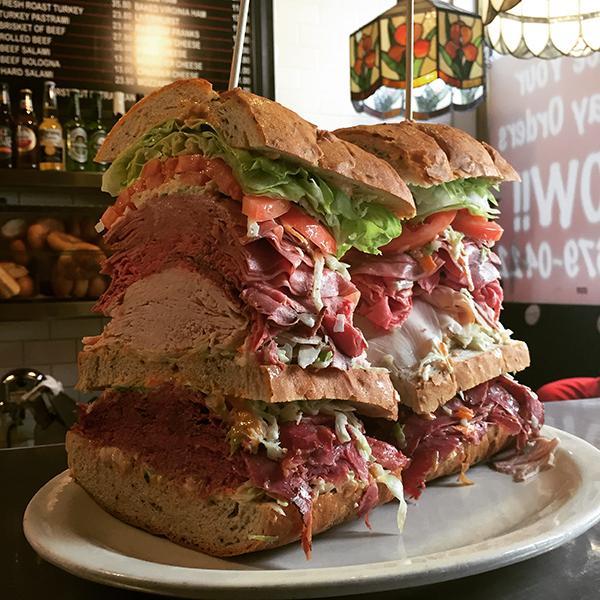
On 3rd and 37th Street, Sarge’s Deli offers a monster sandwich topped with Corned Beef, Pastrami, Roast Beef, Fresh Turkey, Salami, Sliced Tomato, Lettuce, Cole Slaw & Russian Dressing, weighing 4.5 pounds.
If your vice of choice is gluttony, hop on the next train to Brooklyn. Don Chingon, a modern Mexican eatery that opened in Park Slope this August, promises to push our love of gluttony to the extreme with the “Gran Chingon Challenge.” After paying $150 to enter, participants must consume a 30-pound burrito and a ghost pepper margarita in under an hour. If you can handle that meal within the time limit, you’ll walk away with a 10 percent stake in the restaurant. The challenge began on Oct. 19, but a victor has yet to emerge. Not a fan of Mexican food? Here are few other, slightly less-outrageous good challenges to try around the city.
Lone Star Bar & Grill
8703 Fifth Ave. (Brooklyn)
If an insatiable hunger ever strikes while you’re in Brooklyn, mosey on over to Lone Star Bar & Grill. Their menu features dishes typical of a sports bar such as chicken wings, burgers and ribs. For the truly hungry (and slightly crazy) diner, there’s always the 87 oz. Beef Challenge, during which competitors must devour an 87 oz. steak — that’s about five and a half pounds — and one side dish in under an hour. If by some miracle you’re able to finish, the meal is free and you walk away with a T-shirt and a picture on the restaurant’s wall of fame. Be warned, however, that failure comes with an $87 price tag.
A Salt and Battery
112 Greenwich Ave.
As a classic British fish and chips shop, all of the food at A Salt and Battery is pretty filling. But if a normal serving of fried fish and potatoes isn’t enough for you, don’t worry. The restaurant’s “Fat Bastard Seafood Eating Challenge” consists of one pound of fried fish, one and half pounds of chips, a side of mushy peas, two sides of tarter sauce and a Coke. If you finish in under 20 minutes, your meal is free along with a T-shirt and a place on their wall of fame. If that sounds just a little too extreme, you can still get the glory if you can clean your plate in half an hour. However, you’ll still have to pay your tab — the “Fat Bastard” will cost you $25.
Sarge’s Deli
548 Third Ave.
Sarge’s Deli, opened by retired cop Abe “Sarge” Katz in 1964, has been a 24/7 mecca for lovers of classic Jewish deli fare for over fifty years. Their extensive menu encompasses everything from blintzes to whitefish salad, but the deli is probably best known for their collection of gut-busting sandwiches. If a Triple Decker isn’t enough to satisfy your hunger, you could always attempt to tackle the “Monster.” For $41.95, this colossal sandwich comes with corned beef, pastrami, roast beef, turkey, salami, sliced tomato, lettuce, coleslaw and Russian dressing all piled on slabs of thick-cut rye bread. There is no time limit and winners receive a free T-shirt upon completion of the challenge.



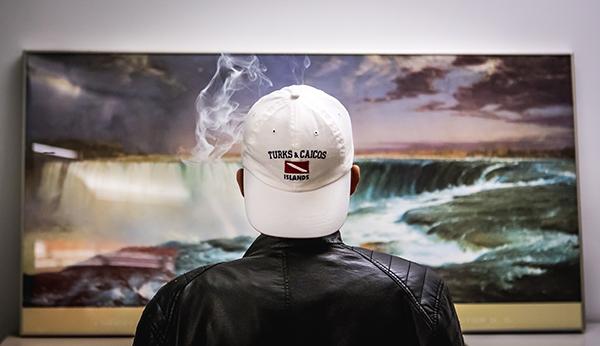
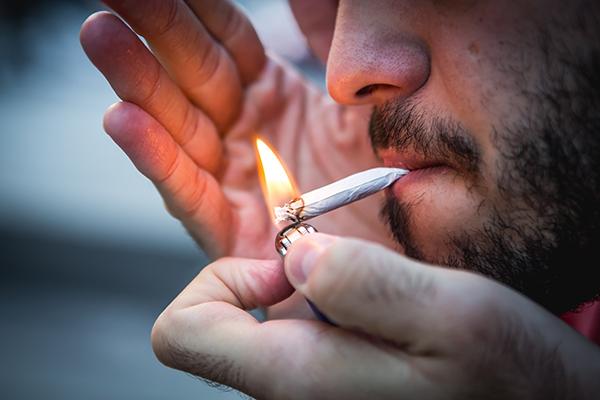
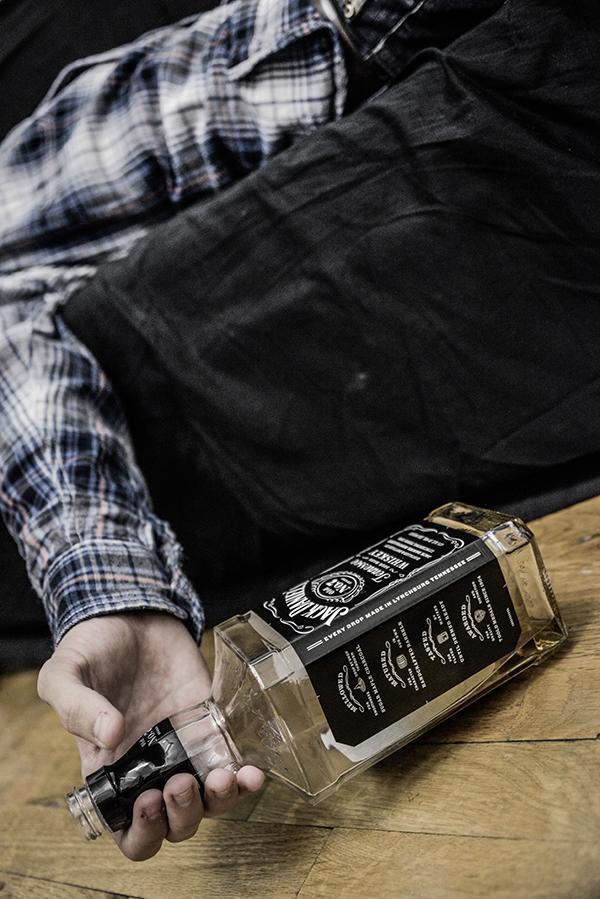
Zoe Ragouzeos • Oct 29, 2015 at 2:33 pm
NYU takes the safety, health, and well-being of all its students seriously. In light of the information shared in this issue, please remember that the professionals at the NYU Wellness Exchange are available 24/7 to any student who may want to discuss something that is of concern to them. Reach us by calling 212 443 9999. We can help students reduce health and safety risks. More generally, the Wellness Exchange can provide psychological support to any student regardless of their issue and can connect students with colleagues within NYU and externally in order to best address their health, safety, and academic concerns.
Cathy Levine • Oct 26, 2015 at 10:45 pm
I was robbed at the Bobst LIbrary. There are no cameras in any areas of the lower lobby. Security has been nasty and uncooperative. I was instructed to go to the precinct to fill out a report. The detective told me this crime is grand larceny which is happening on a regular basis at the library. He said NYU has been unresponsive to his concerns and recommendations to install cameras. Some of my belongings… (Nothing of value) was dispersed throughout the women’s bathroom, including the sanitary napkin bin. It has been a week and a half and I have yet to be contacted by campus security. These are students stealing from students. I feel violated and angry. It appears that NYU does not think that this topic is of concern, which is disappointing since the safety of students and their belongings should be an overwhelming priority. An article addressing this matter would bring attention to this matter. I would be most interested in providing my story.